Food Modified Atmosphere Packaging (MAP) Market is estimated to be worth USD 661.6 Billion in 2024 and is projected to grow at a CAGR of 5 % between 2024 to 2032. The study has considered the base year as 2023, which estimates the market size of market and the forecast period is 2024 to 2032. The report analyzes and forecasts the market size, in terms of value (USD Billion), for the market. The report segments the market and forecasts it by Packaging Gas, by Packaging Material, by End User and by region/country.
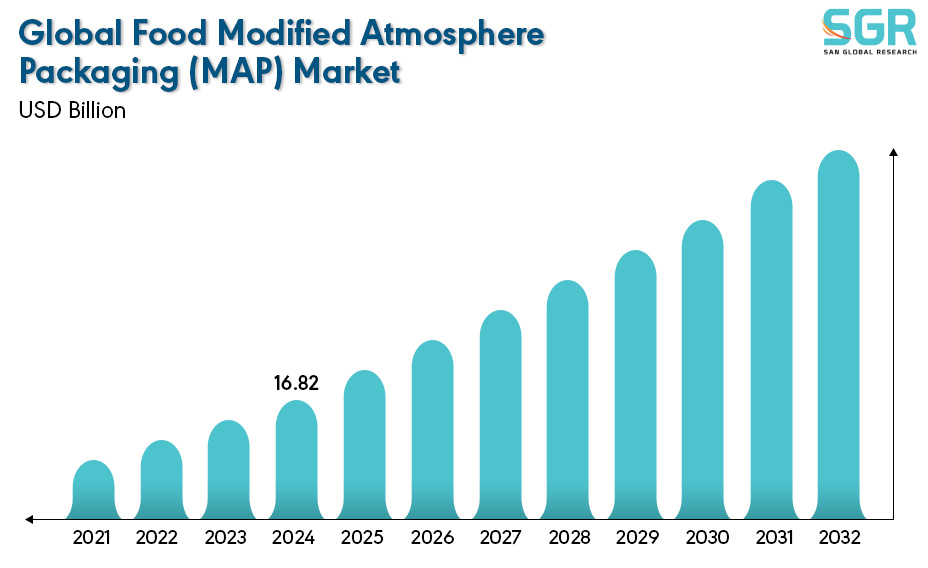
Packaging and storage are crucial factors for extending the shelf life of food items. Modified Atmosphere Packaging (MAP) is a frequently employed technique in the food industry. When a food product is packed in an air contained package it can be spoiled by 3 main mechanisms which are simple oxidation, bacterial action and mould growth. Still these spoilage mechanisms can be limited to a great extent by packing the food in an appropriate modified atmospheric condition.
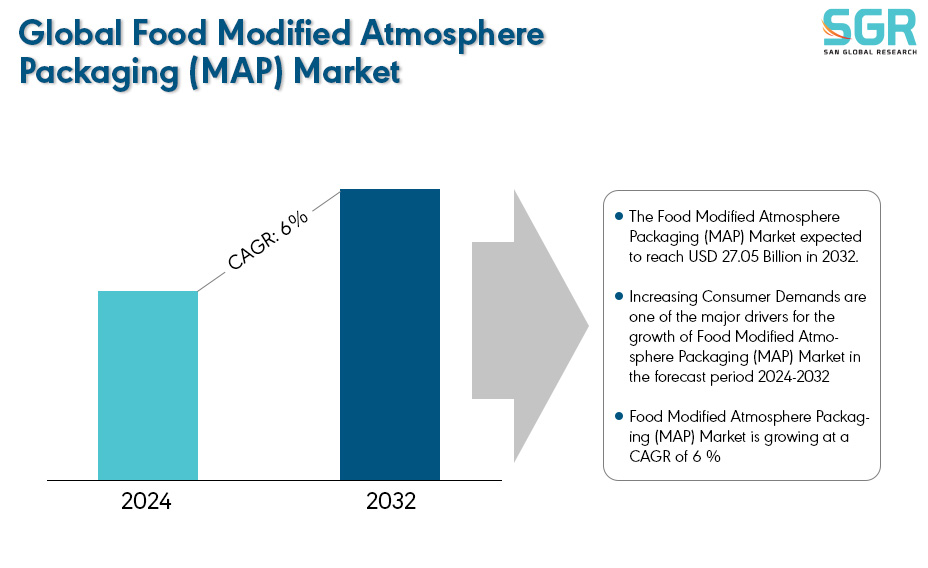
The required gases for Modified Atmospheric Packaging (MAP) are carbon dioxide (CO2), nitrogen (N2) and oxygen (O2). These gases have different role within these packaging process such as the CO2 eliminates the growth of moulds and bacteria, O2 causes oxidation of oil and fat present in the food product and also allows the bacteria and moulds to survive. Nitrogen is an essential inert gas, as it prevents package collapse that can occur due to high carbon dioxide concentration. It also acts as a balancing agent in modified atmosphere packaging.
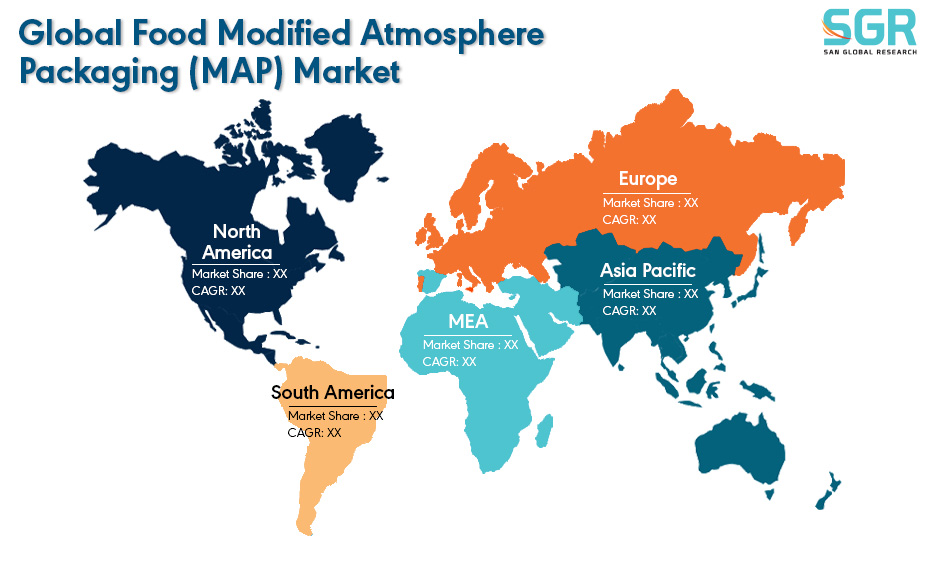
After reviewing the data shown below, it can be determined that the North America region dominates the Food Modified Atmosphere Packaging (MAP) Market for the following reasons.
North Americans are increasingly concerned about weight control and chronic disease risks associated with their diet. Government agencies and health organizations recommend reducing fat and cholesterol intake while increasing consumption of fruits and vegetables. This dietary shift is believed to lower the risk of heart disease and cancer. Consumers perceive fresh produce as more nutritious and flavorful than canned options. Modified atmosphere packaging (MAP) plays a crucial role in maintaining the freshness of fruits and vegetables, contributing to the rising domination of MAP in the North American food market.
The European Food Modified Atmosphere Packaging (MAP) market is also experiencing steady growth. European consumers demand high-quality fruits and vegetables, with no signs of decay, wilting, or shriveling tolerated. They are willing to pay a premium for this quality and often have specific ripening stage preferences. For example, Northern European consumers prefer firm, flavorful tomatoes that are not mealy (overripe) or harvested too unripe. These quality demands necessitate strict criteria for storage, transport, and shelf life. MAP packaging plays an increasingly important role in meeting these criteria, driving market growth in the European region.
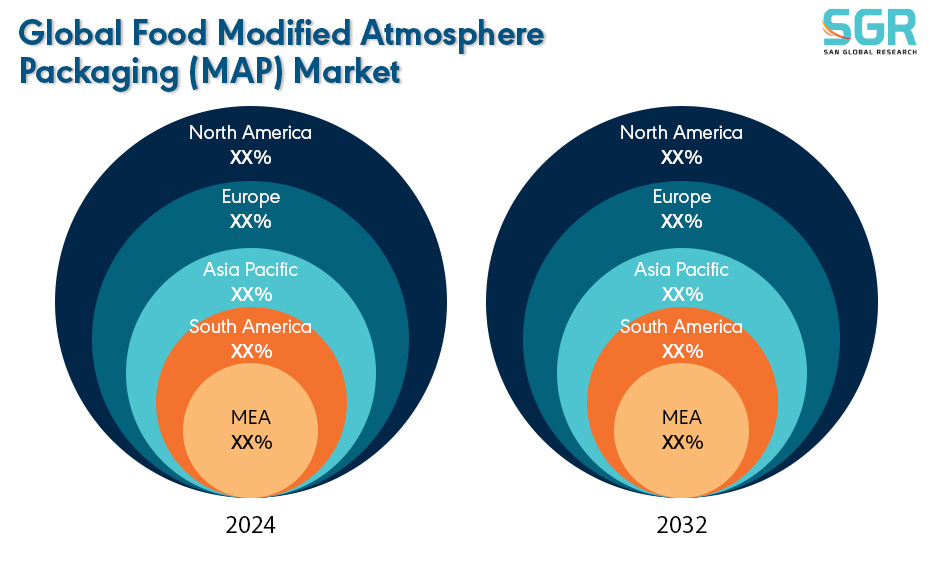
By Packaging Gas
Based on the Packaging Gas, the Food Modified Atmosphere Packaging (MAP) Market is bifurcated by Carbon Dioxide (CO2), Oxygen (O2) and Nitrogen (N2)– where Carbon Dioxide (CO2) is dominating and ahead in terms of share. Nitrogen, an essential inert gas, plays a critical role in Modified Atmosphere Packaging (MAP). Its presence prevents package collapse caused by high concentrations of carbon dioxide (CO2). This allows for the creation of a balanced modified atmosphere by adjusting the nitrogen content. Due to its functionality, nitrogen is widely adopted by various end users in the food industry, including the meat, seafood, and dairy sectors. Consequently, nitrogen dominates the packaging gas segment within the Food Modified Atmosphere Packaging (MAP) market.
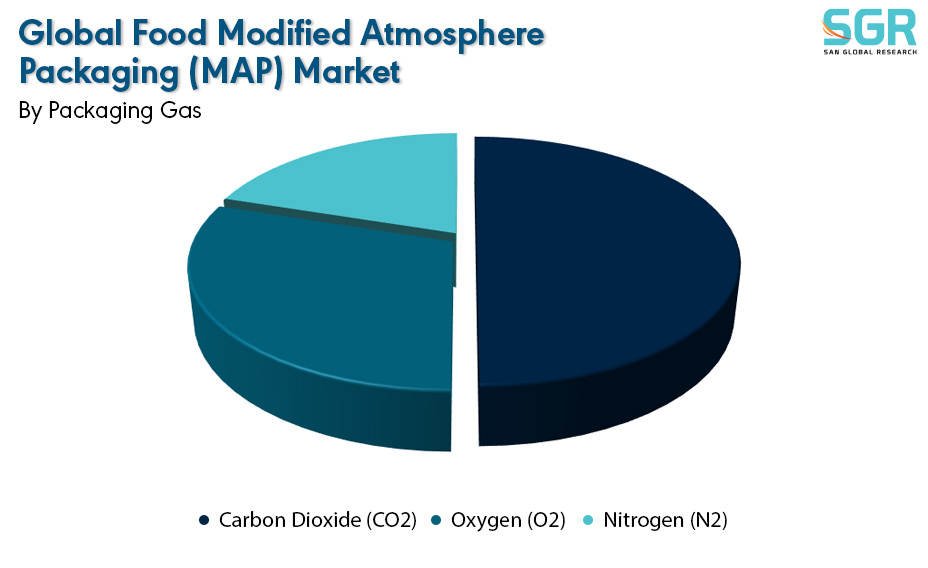
By Packaging Material
Based on the Packaging Material, the Food Modified Atmosphere Packaging (MAP) Market is bifurcated by Polyethylene (PE), Polypropylene (PP), Polyvinyl Chloride (PVC) and Ethylene Vinyl Alcohol (EVOH)– where Ethylene Vinyl Alcohol (EVOH) is dominating and ahead in terms of share. (EVOH) copolymers are a family of thermoplastic polymers used in various industries, particularly food packaging. Their outstanding barrier properties are key for this application. EVOH excels at blocking gases (oxygen, carbon dioxide, etc.) and organic vapors (food aroma). This makes it ideal for multilayer packaging structures used for bags, trays, cups, bottles, squeezable tubes, and jars, offering vital protection to oxygen-sensitive products. Due to which the Ethylene vinyl alcohol dominate the packaging material segment within the Food Modified Atmosphere Packaging Market.
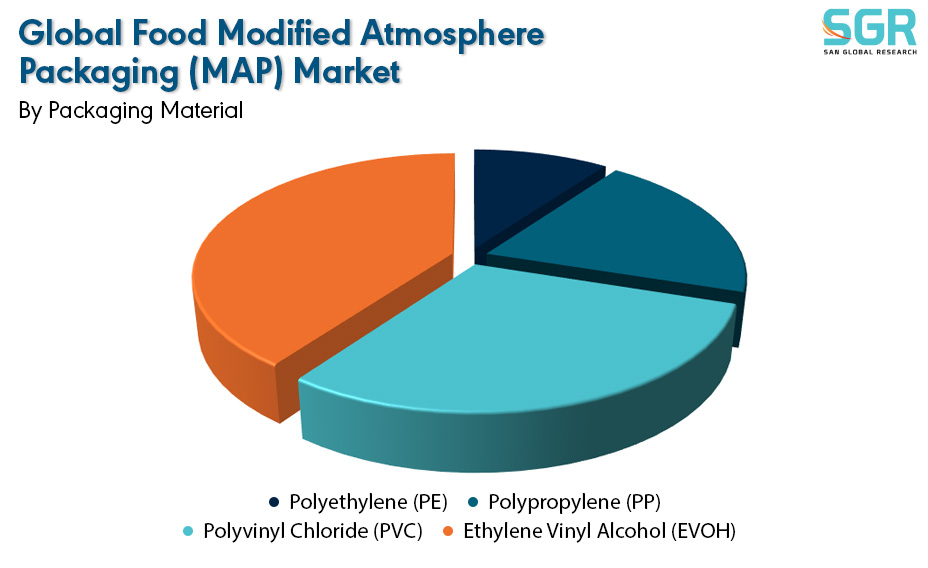
By End User
Based on the End User, the Food Modified Atmosphere Packaging (MAP) Market is bifurcated by Bakery & Confectionary, Poultry, Seafood & Meat Product, Fruits and Vegetables, Dairy Products, Convenience Food and Others– where Bakery & Confectionary is dominating and ahead in terms of share
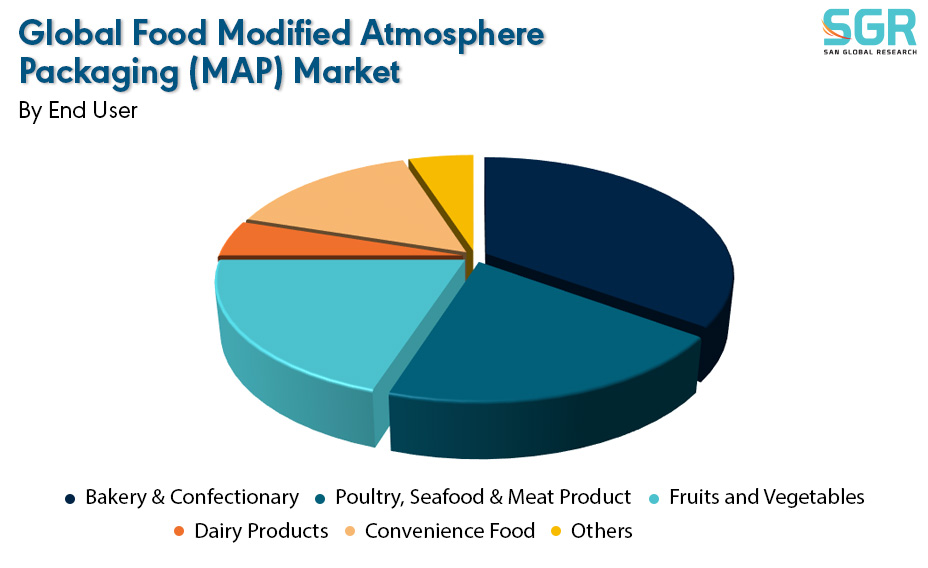
Key Players
• Linde AG
• Bemis Co., Inc
• Amcor Ltd
• CVP Systems, LLC
• Air Products and Chemicals, Inc
Drivers
Increasing Consumer Demands
The global market for year-round supply of fresh, fresh-cut, and minimally processed produce has continued to rise, exceeding the financial value of the market for cereals and other agricultural products. Modified Atmosphere Packaging (MAP) has experienced rapid development in industrial applications as a leading tool for packaging high-value fresh and fresh-cut produce. The increasing interest of consumers in organic and functional food products, recognized as a way to prevent health diseases, also represents a solution to meet consumers' demands for healthy diets with more fruits and vegetables, while offering convenient meal preparation. Due to this upsurge, the market for Food Modified Atmosphere Packaging is significantly increasing.
Opportunity
Research Developments
The major gas mixtures used in Modified Atmosphere Packaging (MAP) typically consists of nitrogen, oxygen, and carbon dioxide. However, other gases can offer additional benefits. Several gases are being investigated for use in MAP storage, including gas oxides (carbon monoxide (CO), nitrous and nitric oxides, sulfur dioxide (SO2), propylene oxide), ethylene, chlorine, ozone, and noble gases (helium (He), argon (Ar), xenon (Xe), and neon (Ne)). These gases can be used singly or in combination to optimize the balance between shelf life and the sensory properties (organoleptic properties) of food products. This exploration of alternative gases presents a major market growth opportunity for the Modified Atmosphere Packaging Market.
| Report Attribute | Detail |
| Market Value in 2024 | 16.82 Billion |
| Forecast in 2032 | 27.05 Billion |
| CAGR | CAGR of 6.0% from 2024 to 2032 |
| Base Year of forecast | 2023 |
| Historical | 2019-2022 |
| Units | Revenue in USD Million and CAGR from 2024 to 2032 |
| Report Coverage | Revenue forecast, Industry outlook, Competitive Landscape, Growth Factors, and Trends |
| Segments Scope | By Packaging Gas, By Packaging Material, By End User |
| Key Companies profiled | • Linde AG • Bemis Co., Inc • Amcor Ltd • CVP Systems, LLC • Air Products and Chemicals, Inc |

 Description
Description
 Table of Content
Table of Content
 Gera Imperium Rise,
Gera Imperium Rise,  +91 9209275355
+91 9209275355


